
Library of Congress (LC) Subject Headings
If you'd like to browse our circulating stacks on-site, the following Call Number ranges may help you find a good read:
Print Books
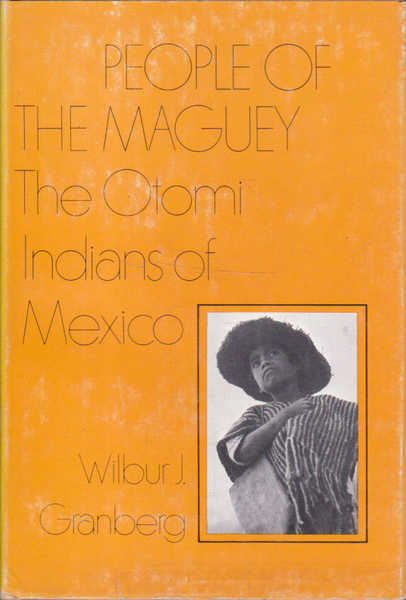
People of the Maguey: The Otomi Indians of Mexico
[COMING SOON]
Published in 1970 on observations from the mid-1960s, this descriptive book describes the lifestyle and practices of the 65,000 Otomí peoples of the Mexican region of the Valley of the Mezquital.

Split Tooth by Tagaq
[COMING SOON]
"A girl grows up in Nunavut in the 1970s. She knows joy, and friendship, and parents' love. She knows boredom, and listlessness, and bullying. She knows the tedium of the everyday world, and the raw, amoral power of the ice and sky, the seductive energy of the animal world. She knows the ravages of alcohol, and violence at the hands of those she should be able to trust. She sees the spirits that surround her, and the immense power that dwarfs all of us. When she becomes pregnant, she must navigate all this. Veering back and forth between the grittiest features of a small arctic town, the electrifying proximity of the world of animals, and ravishing world of myth, Tanya Tagaq explores a world where the distinctions between good and evil, animal and human, victim and transgressor, real and imagined lose their meaning, but the guiding power of love remains." #Fiction
"A spare, lyrical Native American coming of age story set in rural Oklahoma in the late 1980s. With his single mother in jail, Sequoyah, a fifteen-year-old Cherokee boy, is placed in foster care with the Troutt family. Literally and figuratively scarred by his unstable upbringing, Sequoyah has spent years mostly keeping to himself, living with his emotions pressed deep below the surface--that is, until he meets the seventeen-year-old Rosemary, another youth staying with the Troutts. Sequoyah and Rosemary bond over their shared Native American backgrounds and tumultuous paths through the foster care system, but as Sequoyah's feelings toward Rosemary deepen, the precariousness of their lives and the scars of their pasts threaten to undo them both"-- Provided by publisher. #Fiction
The Absolutely True Diary of a Part-Time Indian
Budding cartoonist Junior leaves his troubled school on the Spokane Indian Reservation to attend an all-white farm town school where the only other Indian is the school mascot. #Fiction
Navajos Wear Nikes: A Reservation Life
Just before starting second grade, Jim Kristofic moved from Pittsburgh across the country to Ganado, Arizona, when his mother took a job at a hospital on the Navajo Reservation. Navajos Wear Nikes reveals the complexity of modern life on the Navajo Reservation, a world where Anglo and Navajo coexisted in a tenuous truce. After the births of his Navajo half-siblings, Jim and his family moved off the Reservation to an Arizona border town where they struggled to readapt to an Anglo world that no longer felt like home.
With tales of gangs and skinwalkers, an Indian Boy Scout troop, a fanatical Sunday school teacher, and the author's own experience of sincere friendships that lead to ho?zho? (beautiful harmony), Kristofic's memoir is an honest portrait of growing up on--and growing to love--the Reservation. #Memoir #Nonfiction
Never Whistle at Night: An Indigenous Dark Fiction Anthology
Two additional copies available here.
Many Indigenous people believe that one should never whistle at night. This belief takes many forms: for instance, Native Hawaiians believe it summons the Hukai'po, the spirits of ancient warriors, and Native Mexicans say it calls Lechuza, a witch that can transform into an owl. But what all these legends hold in common is the certainty that whistling at night can cause evil spirits to appear--and even follow you home. These wholly original and shiver-inducing tales introduce readers to ghosts, curses, hauntings, monstrous creatures, complex family legacies, desperate deeds, and chilling acts of revenge. Introduced and contextualized by bestselling author Stephen Graham Jones, these stories are a celebration of Indigenous peoples' survival and imagination, and a glorious reveling in all the things an ill-advised whistle might summon. #Fiction
The Cherokee Nation and the Trail of Tears
In the early nineteenth century, the U.S. government shifted its policy from trying to assimilate American Indians to relocating them, and proceeded to forcibly drive seventeen thousand Cherokees from their homelands. This journey of exile became known as the Trail of Tears.
Historians Perdue and Green reveal the government's betrayals and the divisions within the Cherokee Nation, follow the exiles along the Trail of Tears, and chronicle the hardships found in the West. In its trauma and tragedy, the Cherokee diaspora has come to represent the irreparable injustice done to Native Americans in the name of nation building-and in their determined survival, it represents the resilience of the Native American spirit. #History #Nonfiction
Investigates the enigmatic Native American figure, assessing critical battles attributed to his leadership within the context of the Great Sioux Wars, exploring the relationships between the Lakota Sioux and other tribes, and analyzing the subjugation of North Plains Native Americans. #History
The Native American Experience
A visual guide to Native American history examines the experiences of tribes from coast to coast and their influence on the development of North America, in a volume that features removable facsimiles of rare historical documents. #Nonfiction
The Indigenous Peoples of Mesoamerica and Central America: Their Societies, Cultures, and Histories
In The Indigenous Peoples of Mesoamerica and Central America, Robert Carmack focuses on K'iche'natives of Guatemala, Masayan peoples of Nicaragua, and the native peoples of Buenos Aires and Costa Rica. Starting with Christopher Columbus'proclaimed “discovery” of Central America, Carmack illustrates the Central American native peoples'dramatic struggles for survival, native languages, and unique communities and states. Carmack draws on the fieldwork that he has conducted over the past fifty years to highlight the diversity of the Central American peoples, cultures, and histories, and to explain their significance relative to other native peoples of the world. This book is recommended for scholars of anthropology, Latin American studies, history, and sociology. (eBook version) #Nonfiction
Reprint of the edition published by Rice, Rutter & Co, Philadelphia in 1870 (volumes 1 and 2) and 1865 (volume 3). "Featuring: reproductions of the original 120 full-color lithographic plates; complete original text; individual biographies of over 100 Native Americans, including such notables as Pocahontas, Red Bird, Osceola, Sequoya, and Red Jacket; an original essay on the history of the North American Indians by James Hall." #Nonfiction
"We all came to the powwow for different reasons. The messy, dangling threads of our lives got pulled into a braid--tied to the back of everything we'd been doing all along to get us here. There will be death and playing dead, there will be screams and unbearable silences, forever-silences, and a kind of time-travel, at the moment the gunshots start, when we look around and see ourselves as we are, in our regalia, and something in our blood will recoil then boil hot enough to burn through time and place and memory. We'll go back to where we came from, when we were people running from bullets at the end of that old world. The tragedy of it all will be unspeakable, that we've been fighting for decades to be recognized as a present-tense people, modern and relevant, only to die in the grass wearing feathers." Jacquie Red Feather is newly sober and trying to make it back to the family she left behind in shame in Oakland. Dene Oxedrene is pulling his life together after his uncle's death and has come to work the powwow and to honor his uncle's memory. Edwin Frank has come to find his true father. Bobby Big Medicine has come to drum the Grand Entry. Opal Viola Victoria Bear Shield has come to watch her nephew Orvil Red Feather; Orvil has taught himself Indian dance through YouTube videos, and he has come to the Big Oakland Powwow to dance in public for the very first time. Tony Loneman is a young Native American boy whose future seems destined to be as bleak as his past, and he has come to the Powwow with darker intentions--intentions that will destroy the lives of everyone in his path." #Fiction
eBooks
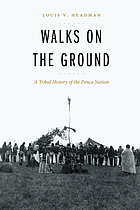
Walks on the Ground: A Tribal History of the Ponca Nation
"Walks on the Ground is a record of Ponca elder Louis V. Headman's personal study of the Southern Ponca people, spanning seven decades" #Nonfiction
Native Americans of New England
This book provides the first comprehensive, region-wide, long-term, and accessible study of Native Americans in New England. This work is a comprehensive and region-wide synthesis of the history of the indigenous peoples of the northeastern corner of what is now the United States—New England—which includes the states of Massachusetts, Connecticut, Rhode Island, Maine, New Hampshire, and Vermont. Native Americans of New England takes view of the history of indigenous peoples of the region, reconstructing this past from the earliest available archeological evidence to the present. #Nonfiction
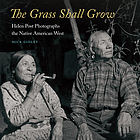
The Grass Shall Grow: Helen Post Photographs the Native American West
The Grass Shall Grow is a succinct introduction to the work and world of Helen M. Post, who took thousands of photographs of Native Americans during a brief period of intense activity in the late 1930s and early years of World War II. #Nonfiction
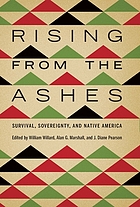
Rising from the Ashes: Survival, Sovereignty, and Native America
"Rising from the Ashes explores continuing Native American survival, contemporary life, and sovereignty, with a focus on the life of the Numipu (Nez Perce) anthropologist Archie M. Phinney." #Nonfiction
"Explains Native American psychology and how its unique perspectives on mind and behavior can bring a focus to better heal individual, social, and global disorders."
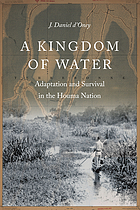
A Kingdom of Water: Adaptation and Survival in the Houma Nation
"In A Kingdom of Water, J. Daniel d'Oney offers a political history of the United Houma Nation in Louisiana in a narrative that examines the nation's history after 1699. By focusing on survival and adaptation to French, Spanish, British, and American imperial control of their region, A Kingdom of Water examines how one Native American group successfully navigated a constantly changing series of political and economic landscapes between 1699 and 2005, all while maintaining their sense of identity." #Nonfiction
"Examines the significant impact of Dutch traders and settlers on the early history of Northeastern North America, and their relationships with its Indigenous peoples." #Nonfiction
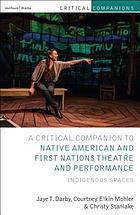
Critical Companion to Native American and First Nations Theatre and Performance: Indigenous Spaces
"This foundational study offers an accessible introduction to Native American and First Nations theatre by drawing on critical Indigenous and dramaturgical frameworks. It is the first major survey book to introduce Native artists, plays, and theatres within their cultural, aesthetic, spiritual, and socio-political contexts. Native American and First Nations theatre weaves the spiritual and aesthetic traditions of Native cultures into diverse, dynamic, contemporary plays that enact Indigenous human rights through the plays' visionary styles of dramaturgy and performance. The book begins by introducing readers to historical and cultural contexts helpful for reading Native American and First Nations drama, followed by an overview of Indigenous plays and theatre artists from across the century. Finally, it points forward to the ways in which Native American and First Nations theatre artists are continuing to create works that advocate for human rights through transformative Native performance practices. Addressing the complexities of this dynamic field, this volume offers critical grounding in the historical development of Indigenous theatre in North America, while analysing key Native plays and performance traditions from the mainland United States and Canada. In surveying Native theatre from the late 19th century until today, the authors explore the cultural, aesthetic, and spiritual concerns, as well as the political and revitalization efforts of Indigenous peoples. This book frames the major themes of the genre and identifies how such themes are present in the dramaturgy, rehearsal practices, and performance histories of key Native scripts." #Nonfiction
Native Foodways: Indigenous North American Religious Traditions and Foods
"Explores the interplay of religion and food in Native American cultures." #Nonfiction
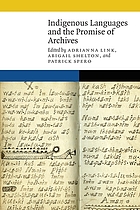
Indigenous Languages and the Promise of Archives
Papers presented at the symposium, Translating across Time and Space: Endangered Languages, Cultural Revitalization, and the Work of History, hosted by the Center for Native American and Indigenous Research (CNAIR) at the American Philosophical Society in Philadelphia, from October 13-15, 2016. "Explores new applications of the American Philosophical Society's Library materials as twenty-first century scholars seek to partner on collaborative projects, often through the application of digital technologies, that assist ongoing efforts at cultural and linguistic revitalization movements within Native communities" #Nonfiction